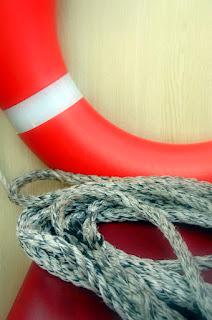
The death of 2 athletes during the swim portion of triathlon races this past weekend--1 in New York, the other in Idaho--has renewed discussions in the triathlon community about race safety.
I've mentioned here previously that USA Triathlon is in the midst of thoughtful review of race-related fatalities over the past decade and will soon be releasing a report with recommendations. Preliminary information was shared with attendees of the USAT annual Race Directors Symposium this past January in Colorado Springs. From 2003 through 2011 there were 31 swim-related deaths that involved more than 3,000,000 participants.
USA Swimming, the national governing body for swimming in the United States, was confronted with a similar challenge in 2010. Long-distance American swimmer, Francis (Fran) Crippen died during a 10K open water swim race in Fujairah, United Arab Emerites, prompting a review of safety protocols not only by USA Swimming but also by FINA, the international governing body for swimming. The reporting on Crippen's cause of death has been incomplete, but a report issued by FINA suggested the possibility of a heart abnormality as well as hyperthermia as playing a role.
As we work through the issues of triathlon race safety, it's worth considering the recommendations that followed from the Open Water Review Commission convened by USA Swimming. I'll refer you to the original report for all of the details, but 8 points deserve mention and comment (in italics) here:
1. In the letter accompanying the recommendations, the Chair of the Commission wrote, "It goes almost without saying that there must be immediate recognition when a swimmer is struggling or loses consciousness; there must be immediate rescue when loss of consciousness occurs; and there must be immediate resuscitation to address medical emergencies." This is the important triad of response that is essential if victims of cardiac arrest are to survive.
2. The Commission recommends that the safety plan allow for on-water safety personnel to react to a need for assistance within 10 seconds and be able to reach a disabled swimmer within an additional 20 seconds. This, too, is essential given the fact that the survival rate for sudden cardiac arrest drops precipitiously with the passing of each minute.
3. A ratio of 1 safety craft per 20 swimmers is required. By comparison, USAT requires 1 rescuer per 50 swimmers.
4. A safety communications plan is required. At a miminum, the plan must provide for water-to-water, water-to-land, and land-to-water communications. Furthermore, personnel on all boats and safety craft must have the ability to communicate with the safety officer and the safety officer must be able to communicate with first responders, safety personnel, and officials on the course. All of this is critical to ensure a coordinated response by rescuers. This becomes increasingly important if a swim course design carries swimmers far from shore.
5. An evacuation plan must be part of the safety planning.
6. All athletes must attend a technical meeting before the race where water conditions, safety plan, emergency situations, the safety communications plan, evacuation plan, and safety craft are described. Moreover, athletes must attend a pre-race safety briefing immediately before the race. What's important is that athletes aren't allowed to compete if they do not attend the meetings.
7. Temperature. No race can be held if the water temperature is below 16C (60.8F); if the sum of air plus water temperature (in Celsius) is <30 air="air" celsius="celsius" if="if" in="in" is="is" of="of" or="or" plus="plus" sum="sum" temperature="temperature" the="the" water="water">63. Further refinement of temperature guidelines are in the offing at FINA and USAT should consider any forthcoming recommendations carefully.
8. USA Swimming requires athletes to attest annually that they are medically fit and adequately prepared for the races entered. The value of pre-participation screening for medical problems, especially heart problems, cannot be overemphasized.


COMMENTS ( 1 )
posted on 23 August at 10:55
I think that a property foreclosure can have a significant effect on the applicant's life. Property foreclosures can have a 7 to several years negative affect on a borrower's credit report. A borrower who's applied for home financing or virtually any loans as an example, knows that the particular worse credit rating is actually, the more hard it is to have a decent mortgage. In addition, it can affect a new borrower's ability to find a good place to let or hire, if that gets the alternative real estate solution.
Good blog post.